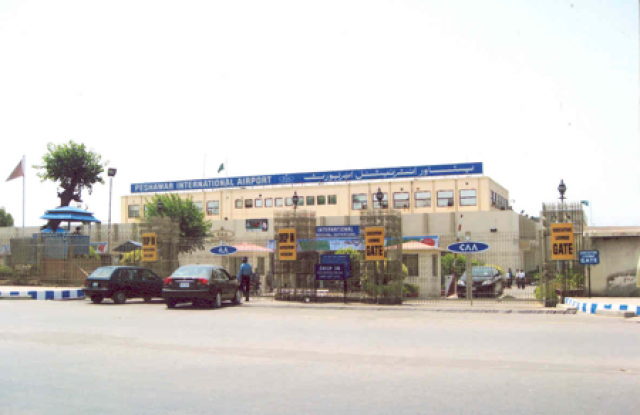Clear and present danger
Government, security forces need to put on their thinking caps and security needs to be beefed up around all airports


Crudely put, the storming of airports has some sort of remedy — that is increasing security around airports’ parameter to repel breaches. But what can be done about the firing that comes from the dense settlements that surround the airports — settlements that an aircraft has to fly over at low altitudes during its approach to the runway? Sprawling settlements that are present not only in Peshawar, but also in major airports such as Lahore and Karachi? Surely you cannot just raze them — as not all of them are illegal, and not everyone there is a terrorist. Do you move the airports, or shift approaches? These are serious questions that cannot be solved by simply throwing an extra security cordon around the airport; these are questions that throw up a crippling conundrum for already stressed security arrangements in Pakistan, because they can realistically only be addressed in the long term, given the magnitude of the answers, but must be tackled in the short term, given the urgency of the threat.
The truth of the matter is that this problem has long been cited as an immediate and omnipresent threat — but little has been done to plan a way out. In fact, the Peshawar airport has come under sniper fire from these settlements before — including one incident that included rocket launchers. Moreover, the problem of aircraft coming under fire has been reported before, repeatedly, due to the heavy aerial firing from these areas — incidents that were not necessarily acts of terrorism, but were part of ‘customary celebrations’ taking place in the area below. This problem has finally fully materialised with the June 24 incident. One woman may have been killed, but consider this: What if the bullets had hit the fuel storage area? Or the pilots? There were some 178 passengers on flight PK756 plus the crew. One shudders to think that the death toll could very well have been over five times that of the dramatic Karachi airport attack — and that’s not including the deaths that could have resulted from the airplane and its debris landing on the ground in the same densely populated settlements around the airport.
Even in this incident, the pilots must be commended and celebrated for their handling of the landing. The panic that must have ensued in the aircraft after the firing could very well have adversely affected those in the cockpit. And the loss of cabin pressure and the possible effects on the aircraft’s instruments and stability would surely have thrown up another challenge for the pilots.
Then there are other questions: Can a simple, commonly available submachine gun hit an aeroplane at that height (which itself is a matter of some confusion, since one official said the plane was 300 feet up when hit while another said 1,500 metres) and penetrate its metal shell, and subsequent layers and cargo area, and still have enough impact to kill a passenger? Or was the weapon used more sophisticated? The answers here are once again double-edged: If it was a larger, sophisticated weapon, how was it transported to such a sensitive location without anyone knowing?
The security forces and government need to put on their thinking caps. Security needs to be beefed up around all airports and, more importantly, our intelligence agencies need to actually prevent future attacks, which for now may be in the planning stages. Is there no justice in this land?
Published in The Express Tribune, June 26th, 2014.
Like Opinion & Editorial on Facebook, follow @ETOpEd on Twitter to receive all updates on all our daily pieces.













COMMENTS
Comments are moderated and generally will be posted if they are on-topic and not abusive.
For more information, please see our Comments FAQ